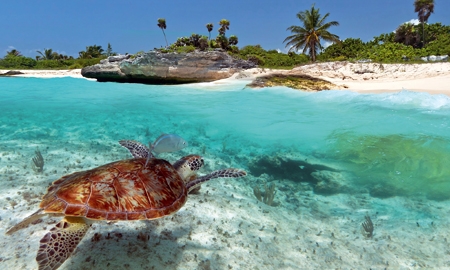Tourism is essential for the development of Mexico, representing 9 per cent of GDP and the third source of foreign exchange. Here, Claudia Ruiz Massieu, Secretary of Tourism, speaks about the Peña Nieto administration’s push for diversification of one of the country’s strongest, most democratic sectors.
Why such a heavy focus on tourism in the current administration?
The President has recognised the importance of the sector and determined that during his term it will be a priority for the country’s development. The idea is to leverage our strengths and our economic comparative advantages in general, and tourism in particular.
Mexico has a stable economy, with solid macroeconomic indicators and a well-capitalised financial and banking sector; however, we need to rise to the challenge, which means having much more democratised productivity, that is to say, that all sectors and regions of the country may benefit from this macroeconomic strength and that it truly may translate into more resources for Mexican families.
In this sense, tourism becomes a strategic tool because it can democratise productivity, generating development throughout a country’s regions and communities, especially as it affords people the opportunity to work in places where their choices of work are limited. In this regard, Mexico has enormous comparative advantages that allow us to invest in tourism.
We enjoy a privileged location, not because we’re next door to one of the strongest markets in the world, but also because we are a bridge between North America, Central and South America. We have coasts on two oceans and this gives us tremendous geographical diversity.
Given the sector’s ability to involve the communities and the private sector, tourism is truly an economic activity that can and should be encouraged in the following years. Claudia Ruiz Massieu, Secretary of Tourism |
We’re also blessed with enormous natural wealth and a cuisine that has been declared an Intangible Heritage of Humanity. We have more than 35 World Heritage Sites, ‘living cultures’, important handicrafts, artists of global repute and a long tradition in the hospitality industry.
We’ve been developing our tourism infrastructure over many decades, which leads us to believe that we can be even more competitive. We have more than 50 international airports, 50 world-class golf courses, over 70 convention and exhibition centres, and good roads and motorways.
President Peña Nieto wants tourism to serve as an engine of regional and community development. And given the sector’s ability to involve the private sector and the communities – from MSMEs to large investors – it is truly an economic activity that can and should be encouraged in the following years. It’s also important to mention that tourism is the top youth employer and third for women workers. Therefore it helps generate social inclusion as well as regional and social equality.
In what ways does the current President’s policy differ from previous ones?
First, we set as a goal to be more competitive, recognising that tourism is a global activity, increasingly more demanding and more competitive. We decided to focus on the quality of our products, differentiating ours from other countries’, diversifying the tourism offer in Mexico by leveraging our comparative advantages.
Mexico has traditionally been an international competitor mainly among sun and sand destinations. These are still very important to us and the President instructed us to deploy an agenda of competitiveness for each of our destinations, to continue developing new products that add value to and complement our beaches so we can attract other types of tourism. But we must also focus now on other tourism segments and niches that generate revenues to our competitors, such as culture, adventure, rural and ecology, sports, luxury, health and well-being, among others.
Mexico wants to receive more tourists but above all it aims to generate greater income. For this we’ll employ a two-pronged strategy with a crosscutting approach. The President has created a special cabinet to coordinate all areas of the government with an impact on tourism to work towards a national tourism policy. This is key because tourism is a complex activity which engages more than 40 branches of the economy, as well as the Home Office, the Secretary of Environment and Natural Resources, the Ministry of Education and Conaculta, the agency that manages and cares for our cultural heritage in Mexico. We will also work hand in the hand with the Indigenous People Development Commission, seeking to generate tourism, tourist projects and development in indigenous communities.

0 COMMENTS